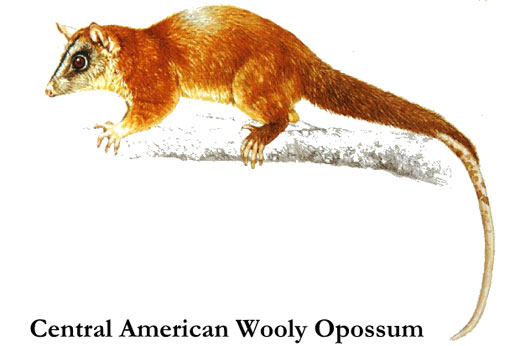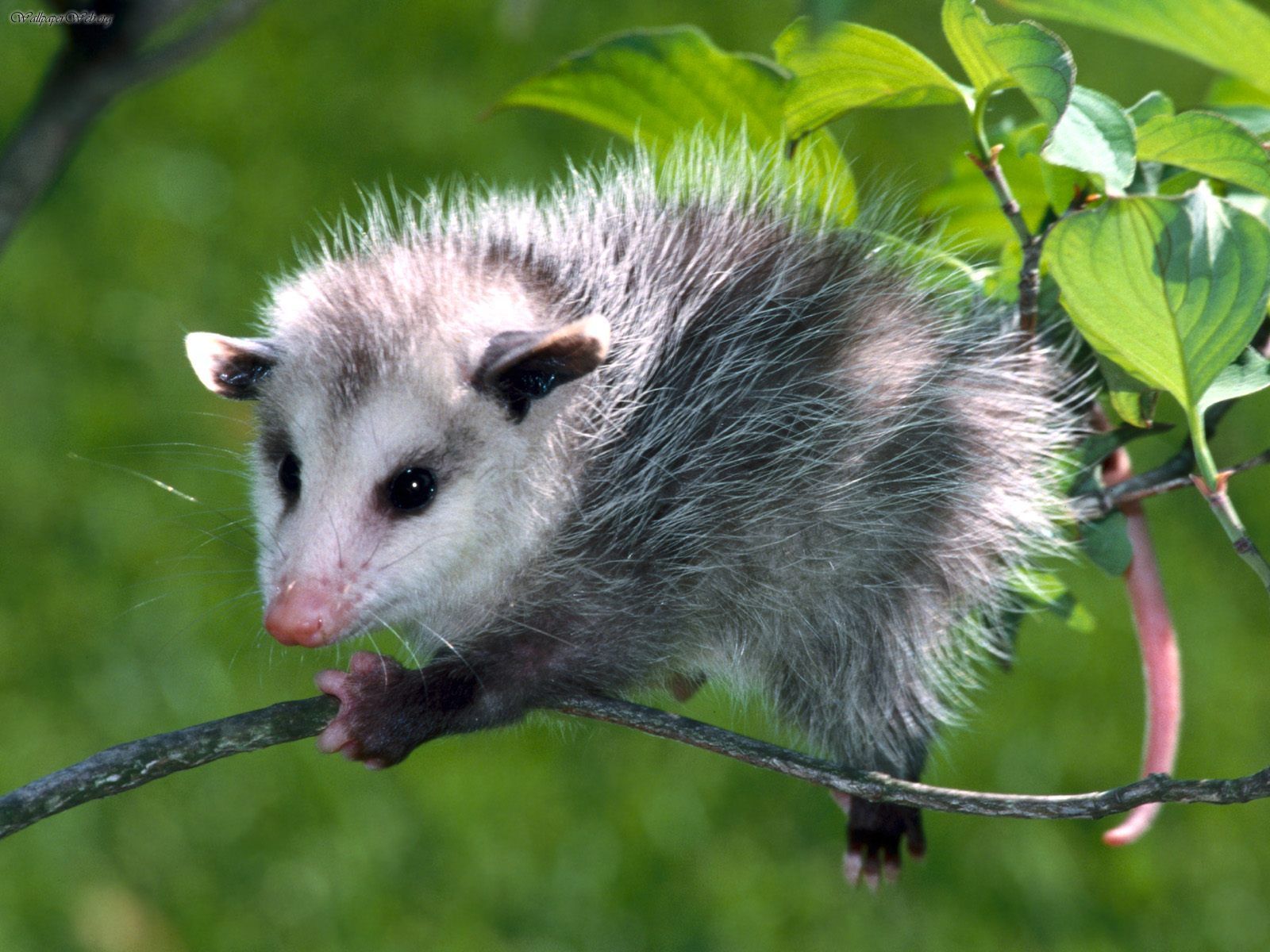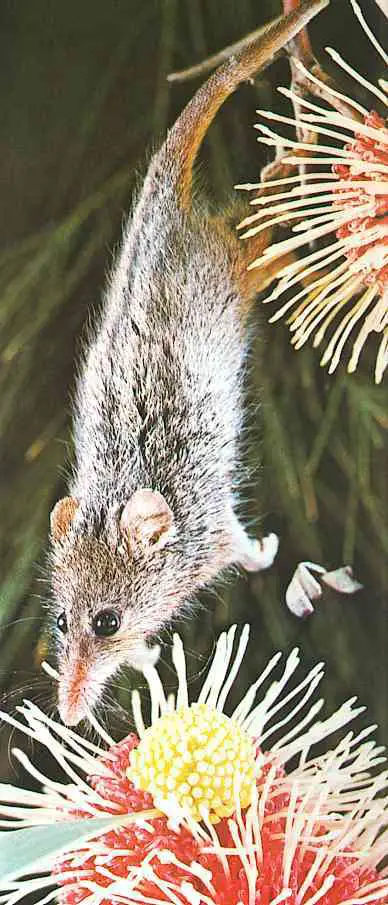Central America Wooly Opossum
The woolly opossum, which is a good bit smaller than its cousins, the North American possums is a tree dweller, primarily found in arboreal forests in both Central and South America.
This opossum is an omnivore, and will eat fruit, berries, insects, smaller vertebrates and also carrion when they are taking food.
The wooly opossum will make its home in hollow trees, and it is said that it will carry bedding for the home using its tail, which is prehensile, well able to grip branches and other things.

The wooly possum is a long and slender animal which is covered in thick wooly hair.
Its ears are creamy white to pink and it may be grey, brown, brownish yellow or white.
Little is known of the woolly opossums’ behavior in nature, as they are secretive in nature, nocturnal and are not often seen although they are not endangered. We do know however that the Wooly Possum uses its forefeet for both eating, and carrying its food as well as for facial grooming.
Those same forefeet are also used to groom its sides and the tail, which is held and licked clean.
The Wooly possum is a very skillful climber, remaining most of its life in the trees, where its tail is used for balance and holding on.
The woolly opossums breed during the dry season which is January to June in Central America but some studies suggest that they may breed year round in other areas.
The female will have one to four young, which will then attach themselves to a teat after their birth, and enter a pouch where they will remain until they reach about three months of age.
By nine months they are completely mature and ready to breed in their own right.
The Wooly Possum has been reported to live in excess of five years in captivity.
“In captivity the species is strictly nocturnal with greatest activity periods just before and after the light period. Food deprivation caused a doubling in activity level, while constant illumination resulted in a decrease in activity.


